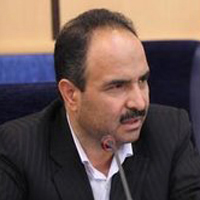Nurse's perception of moral distress among nurses working in educational hospitals affiliated to Yazd University of Medical Sciences
Author(s):
Article Type:
Research/Original Article (دارای رتبه معتبر)
Abstract:
Background And Aim
Nurses are one of the largest service providers who face mental stress in their workplace. Moral distress causes the nurse avoid communicating with the patients and taking care of them. Along these, the basic and physical needs of the patients are not provided and when the nurse feels uncomfortable and injured and with the repetition of this issue, the nurses complacency and self-esteem, and the care provided by the nurse fail. This allows nurses to choose negative matching practices such as avoidance of the befallen situation, changing their hospital ward, and quitting their job. This study was conducted to determine the nurses perception of moral distress in nurses working in educational hospitals of Yazd city.Materials And Methods
A descriptive cross-sectional study was conducted on 370 nurses working in educational hospitals in Yazd, 2012. Moral Distress Scale (MDS) with 95% validity and 97% reliability was used to measure the severity and frequency of moral distress in nurses. This standard questionnaire includes 38 items, each of which describes a stressful situation. This tool shows the frequency and severity of moral distress based on a 7-point Likert scale. To determine the severity of the distress, a score of 0 to 6 is considered for each score. The minimum score for MDS is 0 and the maximum score is 228. To measure repetition of moral distress, participants are asked to indicate the number of exposures to the described situation in the item by a score of 0-6. Sampling was done on a non-random basis. Data were analyzed using SPSS software version 18.Ethical considerations: After obtaining the permission of the Ethics Committee of the Vice-Chancellor for Research and Technology, Yazd University of Medical Sciences, by the code 1395-132, and considering general code of research ethics, the participants consent was obtained after describing the objectives and the research process and ensuring confidentiality of information.
Findings: The age range of the participants was 22 to 52 years old, most of them were women, married and official employee. The mean score of nurses perceived moral distress was 3.41 ± 1.28 and the mean score of repeated severity of moral distress was 2.60 ± 1.1. Item No. 35 (working with physicians who do not have the required qualifications to meet the patients care needs) had the greatest severity and item No. 2 (pursuing the family request for continued patient life support, despite the patients request) had the lowest severity of moral distress. The highest frequency of moral distress was related to item No. 5 (initiation of resuscitation, while I believed it was inconclusive and only prolonged the death process), and the lowest frequency was related to item No. 29 (pursuing the patients request of helping him/her to commit suicide when the patients prognosis is poor).
There was a negative relationship between age and severity of moral distress (r = -0.1 and p = 0.04). Also, the marital status of participants had a significant relationship with moral distress severity (P = 0.001). There was no statistically significant relationship between the mean score of moral distress and other demographic characteristics (P≥0.05).
Conclusion
Regarding the moderate degree of moral distress in the participants, it is necessary for policymakers and nursing managers to take measures and strategies to reduce the severity of moral distress and also to identify its causes. Considering the destructive consequences of moral distress, including job dissatisfaction, avoiding nurses from presence at the patients bedside or leaving their job, it is suggested that workshops be held in this regard. Also, holding educational classes for managers and head nurses of the hospital wards, in order to prepare nurses and create appropriate patterns in dealing with problems happening in the clinic can reduce the severity and frequency of their moral distress.Please cite this article as: Fazljoo E, Borhani F, Hoseini SH, Abbaszadeh A. Nurses perception of moral distress among nurses working in educational hospitals affiliated to Yazd University of Medical Sciences. Med Ethics J 2017; 11(41): 7-15.
Keywords:
Language:
Persian
Published:
Journal of Medical Ethics, Volume:11 Issue: 41, 2017
Pages:
7 to 15
magiran.com/p1772295
دانلود و مطالعه متن این مقاله با یکی از روشهای زیر امکان پذیر است:
اشتراک شخصی
با عضویت و پرداخت آنلاین حق اشتراک یکساله به مبلغ 1,390,000ريال میتوانید 70 عنوان مطلب دانلود کنید!
اشتراک سازمانی
به کتابخانه دانشگاه یا محل کار خود پیشنهاد کنید تا اشتراک سازمانی این پایگاه را برای دسترسی نامحدود همه کاربران به متن مطالب تهیه نمایند!
توجه!
- حق عضویت دریافتی صرف حمایت از نشریات عضو و نگهداری، تکمیل و توسعه مگیران میشود.
- پرداخت حق اشتراک و دانلود مقالات اجازه بازنشر آن در سایر رسانههای چاپی و دیجیتال را به کاربر نمیدهد.
In order to view content subscription is required
Personal subscription
Subscribe magiran.com for 70 € euros via PayPal and download 70 articles during a year.
Organization subscription
Please contact us to subscribe your university or library for unlimited access!



